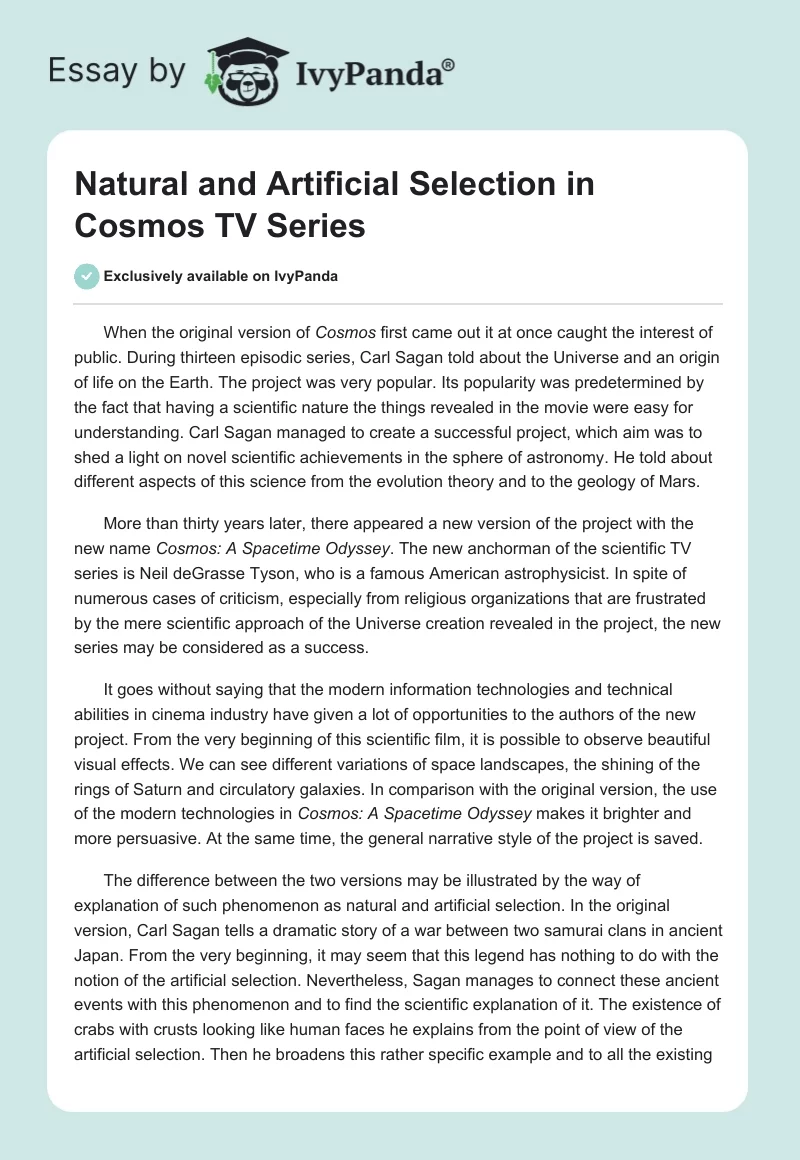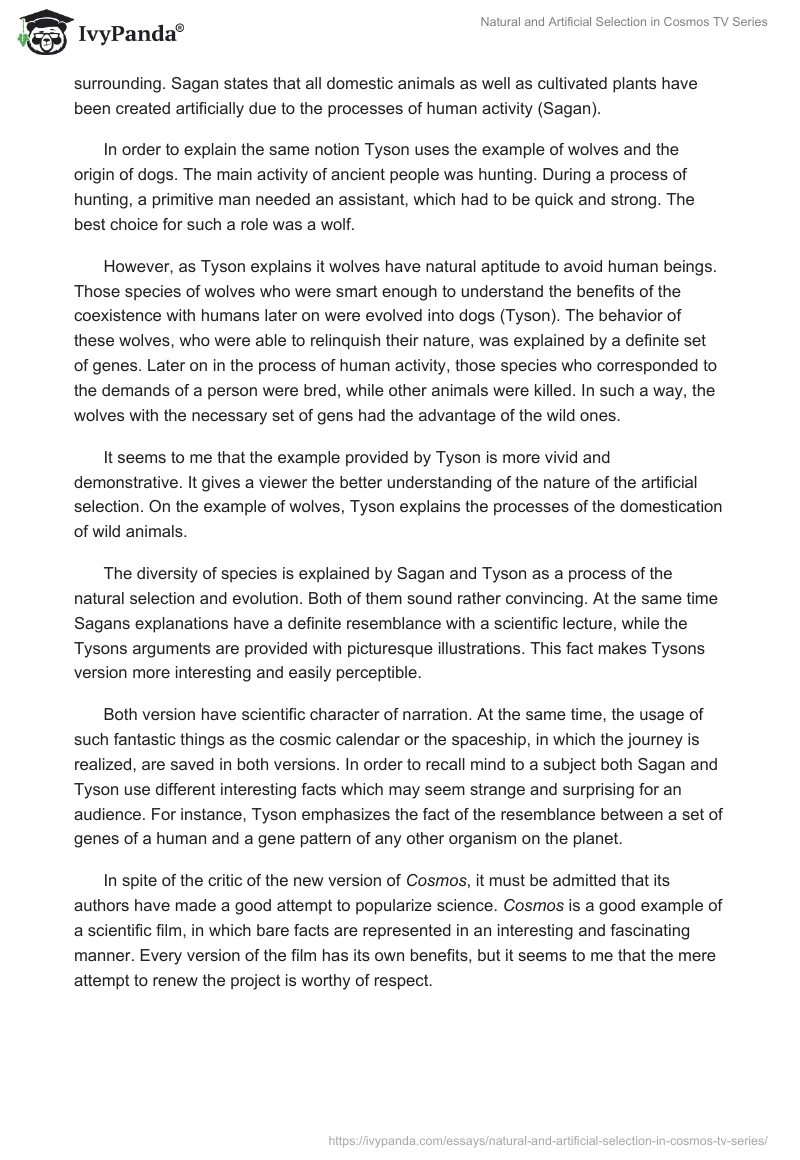When the original version of Cosmos first came out it at once caught the interest of public. During thirteen episodic series, Carl Sagan told about the Universe and an origin of life on the Earth. The project was very popular. Its popularity was predetermined by the fact that having a scientific nature the things revealed in the movie were easy for understanding. Carl Sagan managed to create a successful project, which aim was to shed a light on novel scientific achievements in the sphere of astronomy. He told about different aspects of this science from the evolution theory and to the geology of Mars.
More than thirty years later, there appeared a new version of the project with the new name Cosmos: A Spacetime Odyssey. The new anchorman of the scientific TV series is Neil deGrasse Tyson, who is a famous American astrophysicist. In spite of numerous cases of criticism, especially from religious organizations that are frustrated by the mere scientific approach of the Universe creation revealed in the project, the new series may be considered as a success.
It goes without saying that the modern information technologies and technical abilities in cinema industry have given a lot of opportunities to the authors of the new project. From the very beginning of this scientific film, it is possible to observe beautiful visual effects. We can see different variations of space landscapes, the shining of the rings of Saturn and circulatory galaxies. In comparison with the original version, the use of the modern technologies in Cosmos: A Spacetime Odyssey makes it brighter and more persuasive. At the same time, the general narrative style of the project is saved.
The difference between the two versions may be illustrated by the way of explanation of such phenomenon as natural and artificial selection. In the original version, Carl Sagan tells a dramatic story of a war between two samurai clans in ancient Japan. From the very beginning, it may seem that this legend has nothing to do with the notion of the artificial selection. Nevertheless, Sagan manages to connect these ancient events with this phenomenon and to find the scientific explanation of it. The existence of crabs with crusts looking like human faces he explains from the point of view of the artificial selection. Then he broadens this rather specific example and to all the existing surrounding. Sagan states that all domestic animals as well as cultivated plants have been created artificially due to the processes of human activity (Sagan).
In order to explain the same notion Tyson uses the example of wolves and the origin of dogs. The main activity of ancient people was hunting. During a process of hunting, a primitive man needed an assistant, which had to be quick and strong. The best choice for such a role was a wolf.
However, as Tyson explains it wolves have natural aptitude to avoid human beings. Those species of wolves who were smart enough to understand the benefits of the coexistence with humans later on were evolved into dogs (Tyson). The behavior of these wolves, who were able to relinquish their nature, was explained by a definite set of genes. Later on in the process of human activity, those species who corresponded to the demands of a person were bred, while other animals were killed. In such a way, the wolves with the necessary set of gens had the advantage of the wild ones.
It seems to me that the example provided by Tyson is more vivid and demonstrative. It gives a viewer the better understanding of the nature of the artificial selection. On the example of wolves, Tyson explains the processes of the domestication of wild animals.
The diversity of species is explained by Sagan and Tyson as a process of the natural selection and evolution. Both of them sound rather convincing. At the same time Sagans explanations have a definite resemblance with a scientific lecture, while the Tysons arguments are provided with picturesque illustrations. This fact makes Tysons version more interesting and easily perceptible.
Both version have scientific character of narration. At the same time, the usage of such fantastic things as the cosmic calendar or the spaceship, in which the journey is realized, are saved in both versions. In order to recall mind to a subject both Sagan and Tyson use different interesting facts which may seem strange and surprising for an audience. For instance, Tyson emphasizes the fact of the resemblance between a set of genes of a human and a gene pattern of any other organism on the planet.
In spite of the critic of the new version of Cosmos, it must be admitted that its authors have made a good attempt to popularize science. Cosmos is a good example of a scientific film, in which bare facts are represented in an interesting and fascinating manner. Every version of the film has its own benefits, but it seems to me that the mere attempt to renew the project is worthy of respect.
Works Cited
Sagan, Carl. “Carl Sagans Cosmos. Episode 2.” Online video clip. YouTube. 2015. Web.
Tyson, Neil. “Cosmos A Space Time Odyssey. Season1. Episode2.” Online video clip. YouTube. 2015. Web.


